Darth Maul: A Triumph of the Star Wars Extended Universe
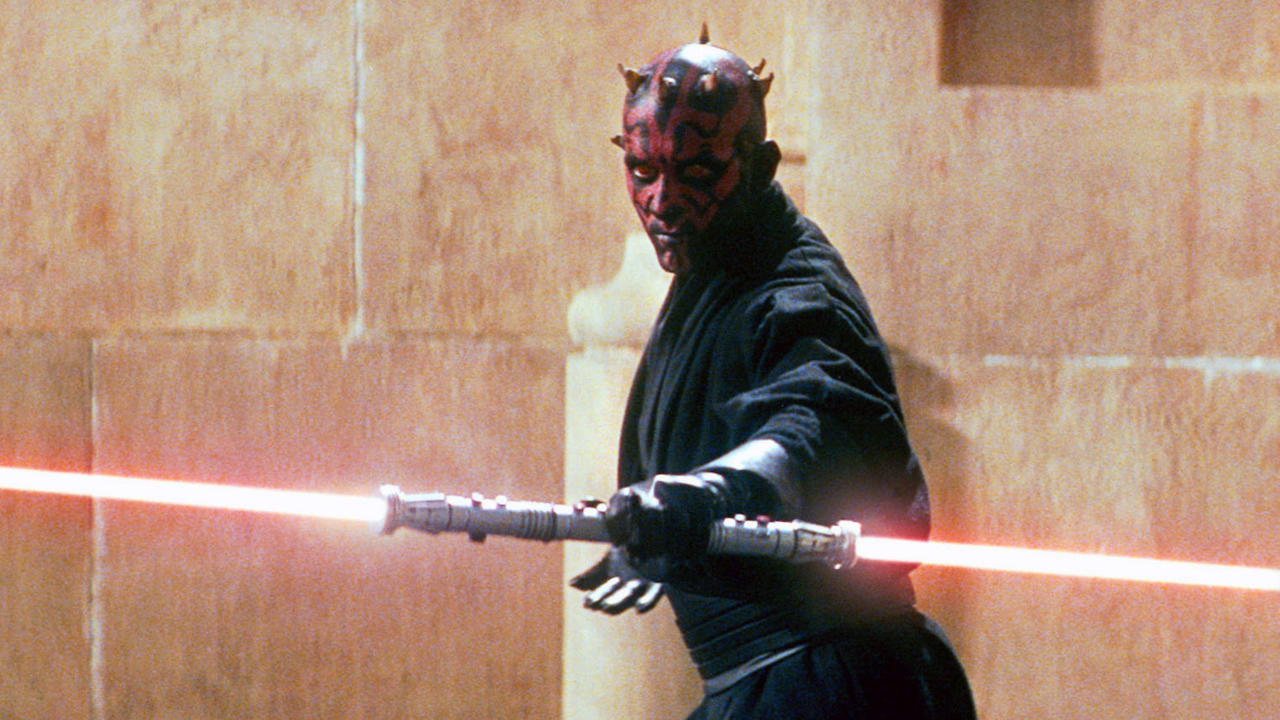
An Iconic Debut
For a generation of Star Wars fans, Darth Maul was (and still is) one of the most iconic characters in the entire Star Wars saga. Fans old enough to have seen The Phantom Menace trailers in theaters were drawn to the horned, double blade wielding villain. A generation of fans (including myself) grew up playing with Darth Maul action figures, plastering Darth Maul posters on their walls, and wearing Darth Maul T-shirts. In fact, it’s no mistake that Maul became a popular figure in the late 1990s and early 200s, as he was the focus of the marketing of one of the most anticipated films of that time period.
The design of Darth Maul is a huge accomplishment in terms of make up, costuming, and character design. The black and red color of Maul’s skin, along with his intimidating horns, were instrumental in making Darth Maul a memorable villain. His costume, a dark variant of the Jedi robes worn by Obi Wan and Qui Gon Jinn, fit the character perfectly. Lastly, one cannot talk about Darth Maul without mentioning the blood red double bladed lightsaber that has become synonymous with the character. While Maul didn’t originate the double bladed lightsaber, he made it instantly and utterly iconic (an event that would repeat itself with Kylo Ren’s cross-guard saber).
The last element that made Darth Maul iconic was his incredible acrobatic skills, which showcased in the stunning duel against Obi-Wan Kenobi and his master Qui-Gon Jinn. Ray Park, the performer who brought Maul to life, had a huge role in making Darth Maul a huge success. Park brought a level of athleticism and acrobatics that had never been seen in the Star Wars universe before. The final climatic lightsaber battle between Maul and the two Jedi remains a huge high point for the entire prequel trilogy and stands as a unique stunt and choreography accomplishment in film history.

Just as quickly as Darth Maul had come to dominate the pop culture zeitgeist, he seemed to vanish. The Phantom Menace would go on to received mixed reviews, and Maul would not escape criticism. Despite his iconic design and his incredible fighting skills, Maul would meet a somewhat ceremonious end at the climax of the film, cut in half by Obi-Wan Kenobi. More than this end, the character received very little actual character development and screen time. Maul received less than a total of 3 spoken line, which were dubbed by Peter Serafinowicz, who famous claimed that all George Lucas told him was to “Just make him sound real evil” (Watkins). Like many future underwritten villains in the Marvel Cinematic Universe, Maul existed more as an obstacle for the heroes to overcome rather than as a character with his own complex motivations and backstory.
Despite his lack of character identity on screen, many fans latched onto the character, which fueled future comics, novels, and video game appearances, all of which kept him alive in the memories of fans. These extended universe tie-ins paved the way for Maul’s eventual return to prominence in the Star Wars Universe.
Darth Maul’s Rebirth
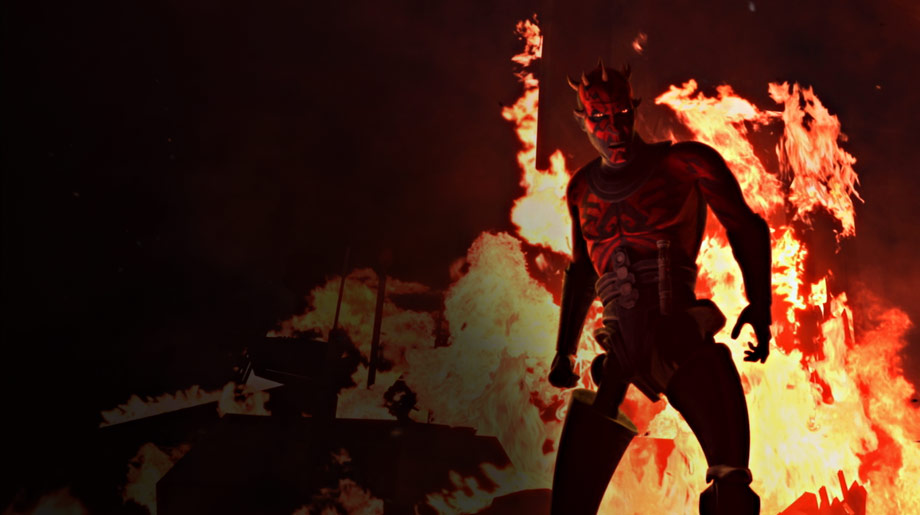
When Disney acquired Lucasfilm in 2012, the studio made the decision to remove the Star Wars Extended Universe from the official cannon. This material would be rebranded as “Legends”, paving the way for Disney to pave their own path going forward. Despite this grand sweep, Lucasfilm and Disney decided to include The Clone Wars television show as the only non-film material that would still be considered canon. This was crucial because it affected the fate and existence of several important characters, Darth Maul among them. Running from 2005 to 2012, The Clone Wars was an beloved and critically acclaimed animated show which focused on the period between Attack of the Clones (2002) and The Revenge of the Sith (2005).
Many fans consider The Clone Wars to best one of the best pieces of Star Wars media from the Prequel Era. The shown popularized fan favorite characters like Ashoka Tano and Asajj Ventress, along with adding depth and nuance to Obi Wan, Anakin, and other characters who were critical to the prequel trilogy. One of the best things about The Clone Wars was that it focused on a long period of time where relatively little had been explored in the Star Wars Universe. In many ways, this time period acted as a place for writers to experiment and explore new and returning Star Wars characters and locations. One of the characters who benefited most from this experimentation and exploration was Darth Maul. Even prior to being a member of the Star Wars Story Group, Dave Filoni, the producers and overseer of The Clone Wars, Rebels, and the upcoming Resistance television series, had a huge impact on Star Wars cannon and it was under his stewardship that Darth Maul made his grand return to prominence.
Even before Maul was reintroduced to the audience, The Clone Wars writers and producers cleverly introduced us to Darth Maul’s home planet of Dathomir. First appearing in Season 3 of The Clone Wars, Dathomir introduced the Nightsisters, a clan of magic-wielding females who lived on Dathomir. Lead by Mother Talzin (Maul’s biological mother), the clan played an important ongoing role in the series, especially for Asajj Ventress, who was a member of the mysterious clan. During this time, the audience gained significant insights into Maul’s past. The audience learned of how Darth Sidious betrayed Mother Talzin and stole Maul from her care, the audience learned that Maul had siblings, and we learned that ways of life he left behind when Palpatine took him from his home. These insights give new dimensions to Maul’s character and past. Maul was raised by Darth Sidious to be a weapon and trained him accordingly. Maul tragically experienced his childhood and early life without experiencing love or affection.
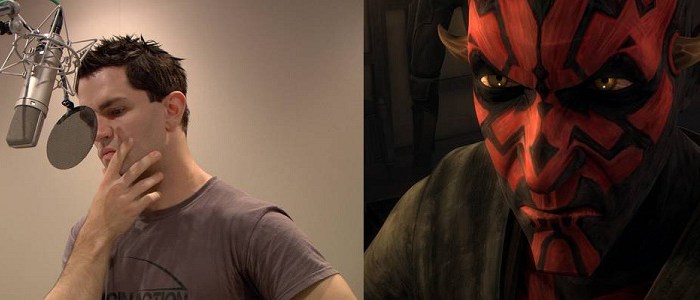
One of the most important aspect of Maul’s reinvention is the tremendous voice work of Sam Witwer. Witwer’s voice work is hands down some of the most impressive work in The Clone Wars television series. Witwer has the monumental task of reinventing Maul through his voice work and Witwer did not disappoint. Witwer gave Maul a sophisticated and often soft voice, but also adding a growl of menace to every word. The casting of Sam Witwer allowed Dave Filoni and The Clone Wars writers to give Maul a more active role in the show. No longer a silent character, Maul was able to fully explain his motivations and interact with the rest of the cast in a more realized way. Driven by his lust for power and a undying hatred for Obi-Wan and the Jedi, sets out for revenge. Maul and Obi-Wan battle throughout the series, adding flames to an already heated rivalry. Maul hones in on Obi-Wan as a target for his relentless hatred, blaming Obi-Wan for irrevocably altering his destiny. This relentless vengeance proves to be costly to Ob-Wan, who is struck a devastating blow when Maul murders the Duchess Satine, Obi-Wan’s former love and one of his oldest companions.
Maul is not satisfied with a personal vendetta against Obi-Wan, he also seeks to expand his power and regain some of his perceived former glory. Ambitious and cunning, Maul is able to force an alliance between a variety of criminal syndicates through a mix of clever bargaining and deadly force. While The Phantom Menace portrayed Maul as little more a glorified servant for Darth Sidious, The Clone Wars redefine Maul as a deadly and intelligent foe. This can be primarily be seen in his elaborate and complicated plan to take over Mandalore. Maul fakes an attack in order to allow the radical Mandalorian Death Watch faction to gain the respect and love of the people of Mandalore, which allows Maul to secure control of the government and install a regime loyal to him. Maul’s plan is an overwhelming success, and after destroying the leader of Death Watch, Maul anoints himself ruler of Mandalore. This action serves as his most triumphant moment, yet it also proves to be his ultimate undoing. Maul’s hubris will cost him more than he could possibly imagine.
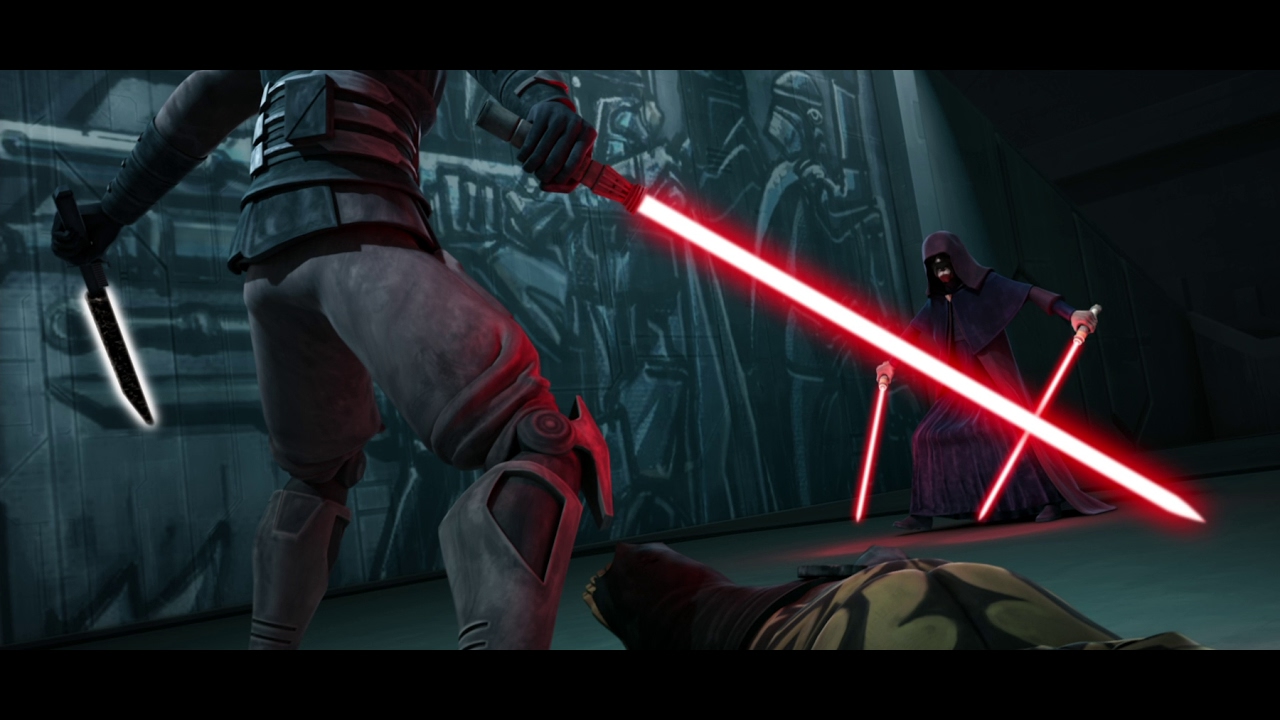
Maul’s triumph on Mandalore is short lived, as his hubris has brought his most powerful adversary to Mandalore: his old master. Viewing Maul as a growing threat, Sidious makes the journey to Mandalore to confront his old apprentice. In an incredible lightsaber duel with Savage Oppress (Maul’s brother) and Maul, Sidious unleashes the full extended of his power on the two brothers. The dark lord brutalizes Maul and kills his brother. In his final moments on the show, Maul begs his former master for mercy, who cruelly replies: “There is no mercy.” Once again, we can see that pain and tragedy are a key element of Darth Maul’s identity and his destiny. Maul has now lost his mother, his brother, and his power. This pain of these losses and his quest for vengeance will consume the rest of his life. This would be the last appearance of Maul in The Clone Wars series, but Dave Filoni would utilize the character for his next television series.
A Fitting Finale
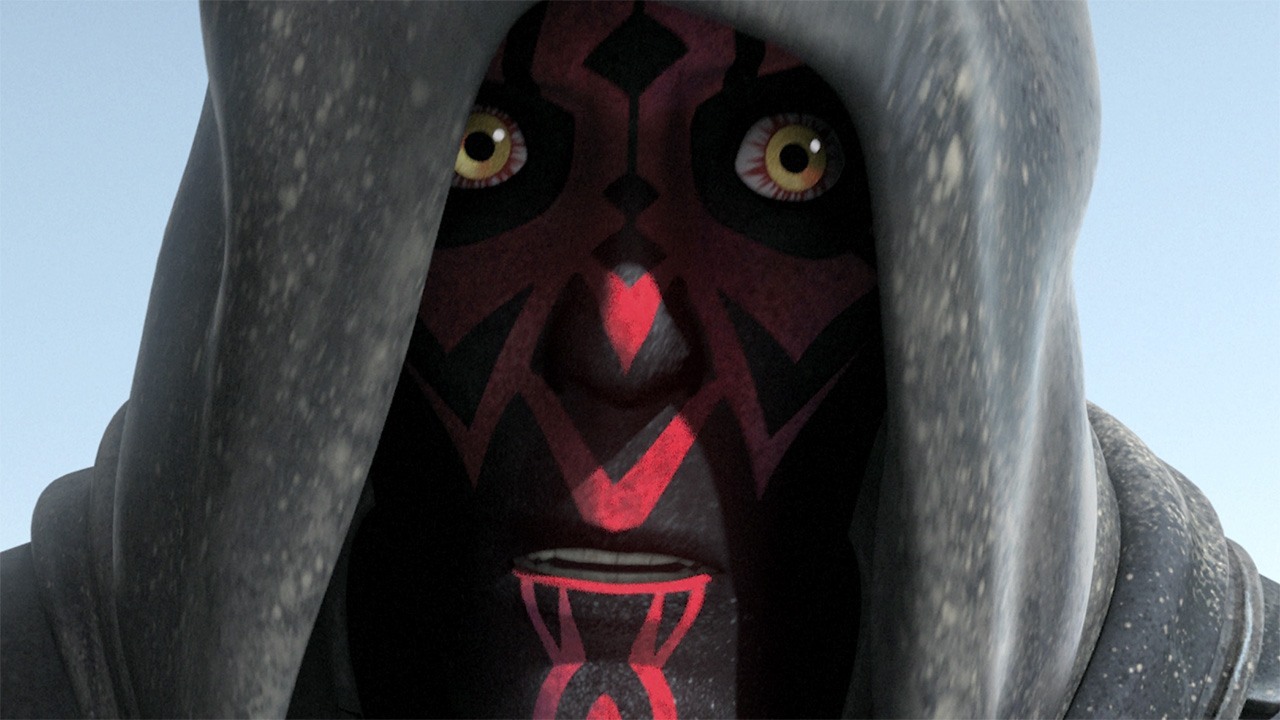
Premiering in 2014, Rebels was in many ways a continuation and evolution of Star Wars: The Clone Wars series. Created by Dave Filoni, head of Lucasfim’s animation division, Rebels fleshed out the period of time prior to the original Star Wars Trilogy, a period out time now free of the restraints of the old Extended Universe. Because of its placement and settings, Rebels became a place where many iconic Star Wars characters would cameo including Grand Moff Tarkin, Princess Leia, Lando Calrissian, and Darth Vader. Additionally, Rebels also was critical in reintroducing several characters into canon, including the legendary Grand Admiral Thrawn. With classic Star Wars characters moving in and out of storyline, in hindsight it seems inevitable that Maul would eventually appear in the show.
Maul plays a very interest role in the Star Wars Universe and his appearance in Rebels was important in several reasons. First, Maul expands the cast of non-Jedi, non-Sith force wielder, adding depth and diversity to force sensitive characters within the Star Wars universe. Second, Maul acted as a tempter and possible teacher for the young Ezra Bridgers, who struggles to find his place in the world of the light side and dark side of the force. Maul acts as a foil for Kanan, who often serves as Ezra’s mentor in the ways of the force. Lastly, Maul’s appearances in the show allowed the writers to resolve the arc that began nearly 20 years ago in The Phantom Menace: a final, definitive end to the conflict between Maul and Obi-Wan.
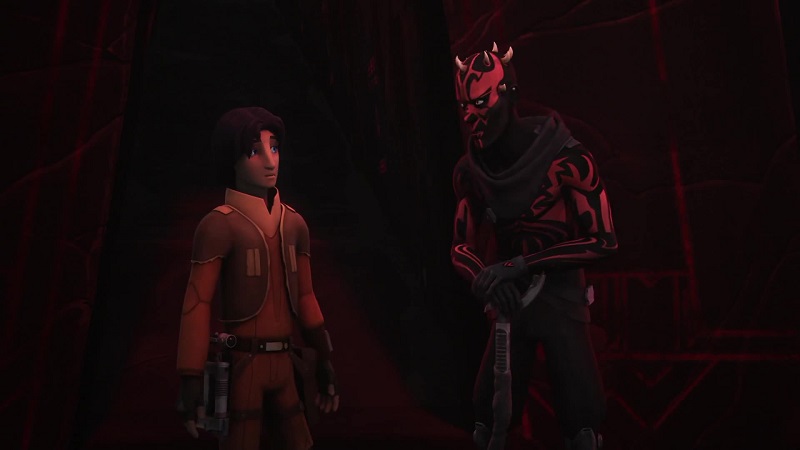
Maul is reintroduced in the two part finale of season 2, titled “Twilight of the Apprentice”. In the show, Erza encounters Maul deep in the ruins of Malachor. Maul disguises himself as defenseless, hobbled old man. Here we see Maul at his most cunning, disguising himself as a harmless figure, yet also extracting more and more information out of Erza as they set out towards their destination. Maul uses his tragic backstory, the loss of his mother and brother, to bond with Erza, who also has lost his family to The Empire. Maul views Ezra as a possible apprentice for the former Sith and he begins to push Ezra towards the Dark Side.
When Ashoka and Kanin are ambushed by three of the Inquisitors, Maul and Ezra come to their rescue. At this time, Maul fully reveals himself as a powerful and ruthless warrior, one who hides his double bladed lightsaber in his unnecessary cane. Kanan and Ashoka are uneasy about allying with Maul, but with any other options, they accept his help. When the Inquisitors attack again, Maul pushes Ezra to unleash his anger, but Erza refuses. After Ezra leaves to activate the temple, Maul betrays them, slashing Kanin across the face, blinding the former Jedi padawan. Maul battles the blind Kanan, who uses Maul’s aggression against him, sending the former Sith hurtling into the darkness.
Maul reappears in Rebels Season 3, where he manipulates Ezra into finally revealing the information that he has sought for so long: the location of Obi-Wan Kenobi. Even after all the traumas and tragedies of his, Maul still holds Obi-Wan responsible for destruction of his life and the pain he has since experienced. When Ezra inadvertently leads Maul to Obi-Wan, Maul relishes his opportunity to revenge himself on the exiled Jedi. Maul correctly senses that Obi-Wan is on Tatooine for a reasons, surmising that Obi Wan is here to protect someone. At this point, Obi Wan draws his lightsaber, unwilling to take the risk that Maul could reveal the location of Luke to the Empire, or take Luke for himself. As the two warriors stand ready for battle, it is clear that both Maul and Obi-Wan have aged drastically since their first encounter. Both of them have confronted lives full of trauma and tragedy and they are no longer young padawans seeking guidance from their respective masters.
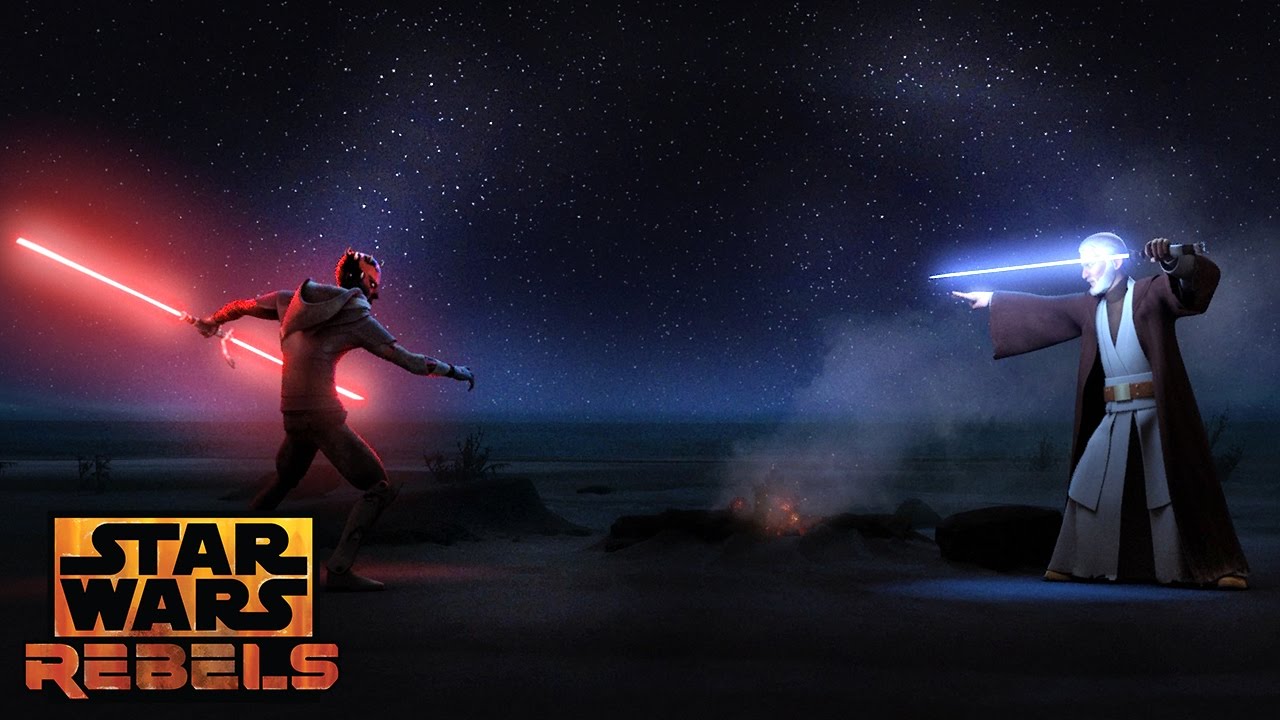
As the two prepare to duel, Maul ignites his double bladed saber, standing in a pose purposely reminiscent of his first appearance in The Phantom Menace. Meanwhile, Obi-Wan starts in a position resembling his Clone War era fighting style but then moves into a stance that mirrors Qui-Gon Jinns’s stance. This move enrages Maul, who again is reminded of his past failures, and Maul rushes forward. The duel is homage to a similar battle in Akira Kurosawa’s Seven Samurai, where one Samurai is calm and reluctant to fight and another is restless, thirsting for blood (Lussier). The duel ends quickly, with Obi-Wan striking down Maul, who attempts to use the same move he used to kill Qui-Gon Jinn on Obi-Wan. Obi-Wan has learned from his past experiences, he recognizes the move Maul is attempting to use against him and counters it, bring a swift resolution to the duel. Maul is trapped in the cycle of violence and trauma that has dominated his life. In an interview about the climatic duel, Dave Filoni asserts that Maul is “hung up on that exact moment [When Obi-Wan defeated him]. That’s where his life went wrong. He can’t let it go.” (Lussier). This inability to move on, to grow, is Maul’s downfall on Tatooine.
In his last moments, Maul asks Obi-Wan: “Is he the chosen one?” to which Obi Wan replies: “He is”. Dying, Maul utter his last words, “he will avenge us.” Even in his last moments, Maul cannot let go of the hatred and lust for vengeance that has defined his traumatic life. He is unable to move beyond his tragic past and ultimately this is why he fails to defeat Obi-Wan on Tatooine
In an incredible interview for Collider.com, Witwer gave his own thoughts on Darth Maul’s story and ending. Witwer asserts that Maul needs Obi Wan to take him “out of this vicious cycle that he’s put himself in and give him a merciful death”. Witwer remind the interviewer that though Maul is Obi-Wan’s enemy, he is cradled by Obi Wan in the same way that Obi Wan cradled “Qui-Gon, a man who Darth Maul killed. Or how he cradled Satine, who Darth Maul killed. Darth Maul gets the same treatment from Obi Wan as Obi Wan gave Darth Maul’s victims” (Trumbore). This humane action illustrates that Obi-Wan has grown beyond his failures, beyond his mistakes, beyond his loss, in a way that Maul never can. In this way, the viewer can feel sympathy for Maul, despite the horrendous actions he has committed. Maul is trapped in a cycle of anger, pain, and trauma that he is never able escape in his lifetime.
It is a testament to the incredible work by Witwer, Filoni, along with the writers and animators of the two television shows that the audience can feel so many different emotions when discussing and reflecting on Maul. In many scenes, he is a ruthless and cruel character, capable of inflicting tremendous pain and cruelty. He is also a tragic character, a child raised without love, who is used by others as a weapon. He loses his mother and his brother and pursues ambition at the cost of great personal agony. This dichotomy between being monstrous, tragic, and ultimately something in between, is far more complex than any character traits illustrated by Maul in his feature film appearance, and thus his development into a fully formed character is one of the best examples of the benefits offered by the Star Wars Extended Universe. The television shows, comics, and novels allow writers to add depth to characters who otherwise would receive very little character development. Maul’s death in Rebels is is hardly the end of the character, Star Wars writers and creators have already taken of advantage of the character of Darth Maul in surprising ways. With the announcement of the final season of The Clone Wars (debuting on the Disney Streaming Service in 2019), it is likely we will see Darth Maul and the legendary Siege of Mandalore teased by Dave Filoni and seen briefly in flashbacks within the Ahsoka novel, which Filoni often cited as his intended ending for the series.
Maul started out as a one note villain, yet developed into a complex character with a tragic backstory and powerful motivations. This change was made possible only in the Extended Universe, and Maul stands as unique achievement in the Extended Universe.
Works Cited
Lussier, Germain. “The Producer of Star Wars Rebels on Tonight’s Incredible Episode.” io9, io9.Gizmodo.com, 19 Mar. 2017, io9.gizmodo.com/the-producer-of-star-wars-rebels-on-tonights-incredible-1793376931
Trumbore, Dave. “’Star Wars Rebels’ Sam Witwer on Playing Darth Maul, Seeing ‘Star Wars’ Done Right.” Collider, Collider, 1 Sept. 2017, collider.com/star-wars-rebels-sam-witwer-interview/#darth-maul.
Watkins, Gwynne. “Darth Maul Voice Actor on the Crushing Disappointment of ‘Phantom Menace’.” Yahoo! News, Yahoo!, 16 Oct. 2015, www.yahoo.com/entertainment/darth-maul-voice-actor-on-the-crushing-203508537.html.
What do you think? Leave a comment.











One of the best back stories.
Meh. Darth Maul was INCREDIBLY overrated. He was just a walking plot device with a neat look and no personality, while the double-ended lightsaber is just about the most STUPIDLY impractical movie weapon ever (and that’s saying a LOT).
Yes, it’s almost like he was a… “Phantom Menace”. A flashy but ineffective bad guy distracting you from the real threat…
That’s why it has been so satisfying to see what they did with him in Clone Wars and Rebels. They’ve actually created a really interesting character based off of, as you said, basically nothing more than a neat design.
Which is more than can be said of pretty much any stories involving Boba Fett.
Darth Maul truly is a badass and underrated villain in Star Wars. I’m glad the clone wars show fixed him cause he had no character in the movie. He’s definitely one if my top 5 favorite villains in the entire franchise
To me it seems Maul is similar to Darth Scion (kotor 2), in that both their bodies were destroyed, but their dark force spirit and extreme power of hate fused or held their physical bodies together.
What we really need are some Darth Maul prequels.
The Darth Maul fan film on YT really deserves a mention.
Thanks for mentioning that, never had a chance to watch it and the fact it exist slipped my mind. Cheers!
i would love to see a trilogy of the rise of Darth Bane. After all, he is the one that destroyed the sith order in his time and reintroduced the original sith order. Most movies in this genre focuses on a hero, what about an anti-hero?
Darth bane is not part of star wars canon. he is part of star wars legends or otherwise known as the EU
He is a part of canon. He appeared in one of the episodes on the last season of the Clone Wars with Yoda
Considering that Darth Maul was cut in half in Episode I and now they are talking about him being alive? How is that a part of Star Wars Canon and not in Legends? All the characters are part of the Star Wars universe. Darth Bane set the path of the sith, whose tradition is extended to the Star Wars canon.
According to the the Sith’s Rule of Two, Darth Maul by default is now the ruling Sith Master and needs to find an apprentice “to crave the power” and help him adhere to the 1000 year mandate.
are you suggesting that Maul is still around, and may be seen in the new movies? I for one don’t mind – even a cameo, even if Windu came back, all bad jedi and all, going after Anakin’s / Skywalker’s heirs as ” revenge ” =S
God no! I don’t want the horrible prequels to be continued in the sequels. Not even the good bits. Far as I’m concerned, Maul died in Menace. Dude was cut in half! That the writers couldn’t come up with good characters and instead invented some ridiculous justification for Maul surviving just speaks to the inability to create new people and situations.
That’s assuming Darth Maul was still alive after the events of Episode VI. After Episode III, what with the rebellion, I doubt Darth Sidious would forget about his first Sith Apprentice – Darth Vader certainly wouldn’t, as Darth Maul was the first Sith Anakin Skywalker had ever seen.
Indeed a character, as many of the SWU, that captured the attention of fans. I think that Maul was indeed iconic, if somewhat simplistic in design but that is part of the appeal. Thanks for the universe overview.
Maul returning was the crappest thing ever, don’t want him back, don’t acknowledge that he returned, don’t acknowledge clone wars. he got cut in half and dropped down a bottomless shaft into a reactor, dead. should have stayed that way.
Time to bring him back!! Long live Maul. (You should check out Ray Park’s history! He’s the real thing in martial arts.) I have met him and talked with him. They do not come any nicer!!!!!
It would be especially awesome to see him in a standalone film or something. I just love him. <3 He's such an interesting character! And this article was very well-written, I enjoyed reading it.
We need more Darth Maul!
A stand alone obi movie could use him as an antagonist or a anti hero.
Man, how much did the prequels ruin by killing off Darth Maul in the first movie instead of bringing him back increasingly mangled in the second and third?
General Grievous’ design coupled with Maul as an consistent antagonist would have a better precursor/mirror of Darth Vader, and it would have provided more continuity the story without sacrificing toy sales because he’d have three different designs to go along with him being more severely wounded.
He went from a cool-looking, disposable bad guy to someone you could cheer for.
Article came out great! Maul is definitely a fan favorite, and I am no exception. Between the mystique and his appearance, he’s a captivating figure.
Hate the prequels all you want but they gave us some of the best Star Wars villians of all time. Disney cant even produced one descent villian.
I really hope Maul returns in another movie. He probably won’t, but still.
Even though I love the Darth Mauls story arc in TCW, I still prefer his origin story from the Expanded Universe ( legends ).
As much as people hated the prequels, it had characters like Darth Maul and Qui-Gon. In the new movies the only one who’s remotely tolerable is Po and sometimes Finn.
Darth Maul should be in a future star wars film. Maul is a proper sith a red skinned one. I really think it would be cool seeing him again.
Fascinating article. The stunning visual of Maul’s style added MUCH needed action in what is arguably the weakest of the the Star Wars movies.
The character died. But because the Star Wars universe lacks imagination to create new characters and scenarios, they found some goofy justification for him to live on.
I don’t care what anyone says but Darth Maul is awesome. His further exploration is one of the biggest reasons why I want to get into the animated shows
I hate the retcon of Darth Maul. Everything that came out around Episode I had Maul being a Zabrak from Iridonia. Palpatine kidnapped him when he felt that he was unusually powerful in the Force. He trained him from infancy and turned him into a weapon to destroy the Jedi.
“Maul would meet a somewhat ceremonious end at the climax of the film, cut in half by Obi-Wan Kenobi.” It sounds like “unceremonious” was intended here.
It’s hard to say Darth Maul is a great character, as he’s given barely any characterization apart from his dark and brooding appearance. He merely acts as a sort of natural disaster that appears and disappears just as quickly, occasionally even killing people. He was essentially all style, no substance. Probably still better than Kylo-ren, the embodiment of the angsty teen who hates his parents because they are too strict.
It’s true that Darth Maul really doesn’t get any characterization, especially in the films. But even despite this, he manages to be a cool and interesting character merely at surface level. This lack of character development may have even added to his aura of mystery. In the Phantom Menace, I wanted to know more about the sneering, horned Sith, mainly because of the lack of explication surrounding him.
Also, I think a character that embodies the self-destructive and childish tendencies of the Sith is really cool and fun to see. Kylo Ren is definitely my favorite character in the new Star Wars trilogy.
I think you have a really good point about the “self destructive nature of the Sith”. I feel like Anakin and Maul both exhibit that quality in many situations.
First correct, “Many fans consider The Clone War to best…” change “to be.” A good essay. A character with no character development in the movie still stands out. I always wondered that myself. This essay does a good job examining that issue.
Who else is excited to have the Clone Wars back for one final season? We may see more of Maul yet!
We will most likely see him in the Siege of Mandalore arc! Which is a key arc for Ashoka and Rex as well.
I think the acrobatic, poised and victimized character type that Maul contributes to is one that is relevant to current times. I think it’s actually a useful meditation on expressions of masculinity, including alternative forms of masculinity that themselves should be understood in the context of their relative healthiness and relationship to tragedy.
Darth Maul definitely became one of the most compelling characters in the Clone Wars animated series. An issue I always took with him was the rivalry with Obi-wan. Considering the little he did in the Phantom Menace, it makes sense that Star Wars writers would take his dramatic demise as the fuel for further characterization, but I found that the rivalry started on shaky ground and the more it came to dominate Maul’s character, the less I could empathize with it. Obi-wan and Maul had one interaction, and having Maul’s entire character focus on it for the rest of his life basically negates anything that would’ve happened before that one fight. There’s nothing in his character that references the planet he grew up on, his time as a Sith apprentice, or any goals he possessed beforehand. He references wanting revenge against the Jedi in the Phantom Menace (probably on behalf of all of Sithdom), but that drive isn’t really brought up again.
The Maul vs. Obi-wan divide was fun to watch, but I found its foundation pretty weak considering the amount of content that it would inspire.
Interesting read!
I’m in the minority, but I think Maul’s function works better as one of mystery. In The Phantom Menace he is placed in the narrative as a stand-in for the standard “evil” in the eyes of a religious order, clearly evoking Satanic imagery. The “Other” that is to be hated and fought against, his silence being an illustration of modern organized Christianity’s creation of this figure as all-encompassing evil. Satan as a literary figure is much more complex than what Church will tell you, so the silence of Maul in The Phantom Menace feels like a perfect illustration of that.
This is a surprisingly common but nevertheless interesting duality of personality presented here.